An editorial note: This blog post was written using voice-to-text functionality on my phone while enjoying the described walk. It has been edited for clarity.
Höngg
The walk starts just behind the church in Höngg, in what remains of the old village centre. Höngg was once a small village outside Zürich, but now it’s fully integrated into the larger city. As I walk toward the Limmat, I gradually leave the urban area behind. Passing the Höngg graveyard, I slowly descend to the vineyard that has long been renowned for its wine—and still is. Even today, it remains one of the few places where wine is grown and produced within Zürich.
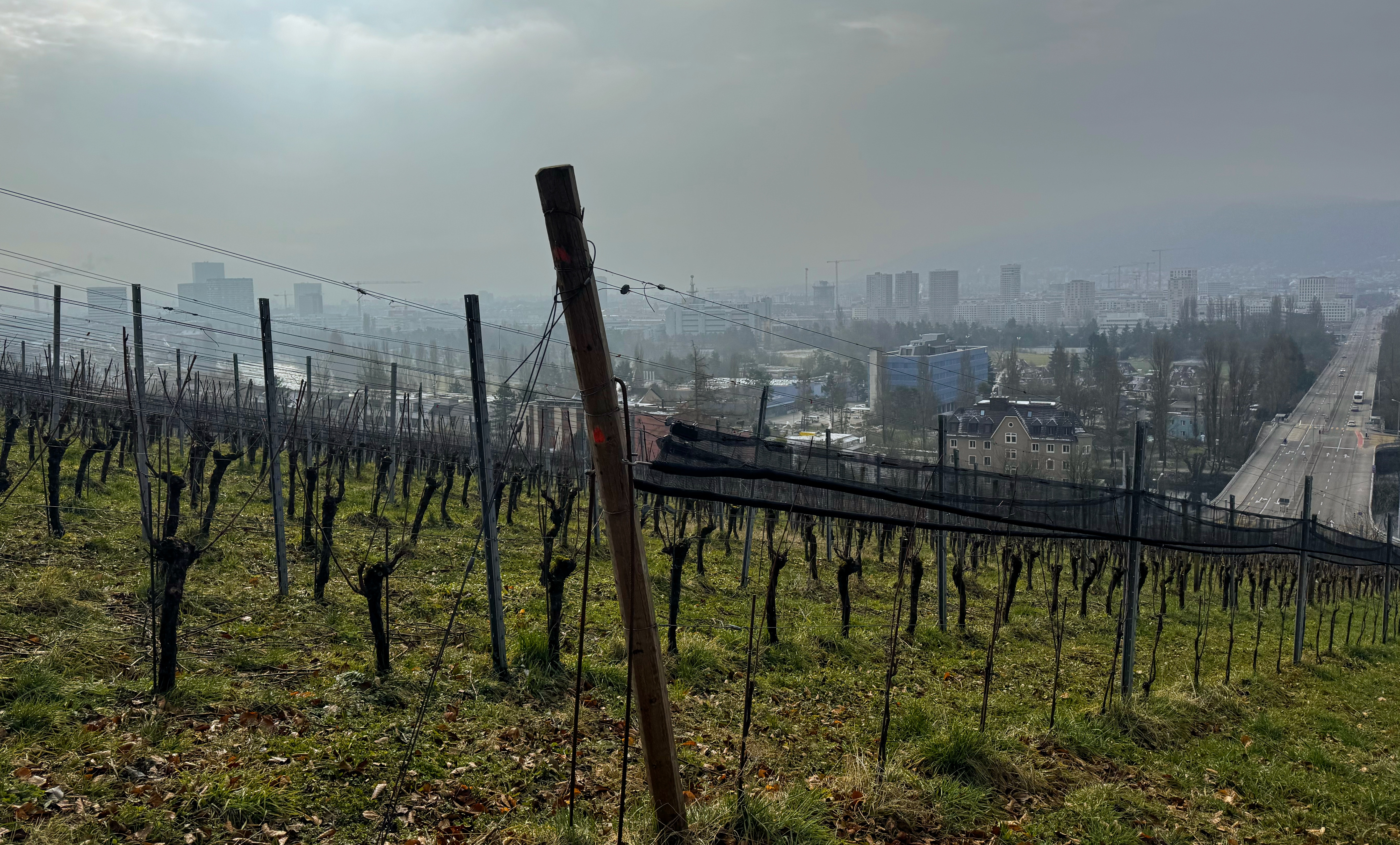
The vineyard overlooking Zürich.
At this time of year, the vineyard looks rather bleak. The vines stand bare, without leaves or grapes, dormant for the winter. Looking past them, I can see the city of Zürich veiled in a mix of humidity, mist, and smog. It’s not freezing, but certainly not warm either. February makes its presence felt.
The path alongside the vineyard is quite steep, descending steadily toward the river. As I leave the natural setting of the vineyard behind, I cross a small stream that flows all the way down from Hönggerberg.
Crossing the nearly empty street, I head toward the river. My next destination: Werdinsel.
Werdinsel
I walk halfway across the river to reach the islet that’s surrounded by water on both sides. On the right is the public swimming area where today a few brave souls defy the cold for a swim. In summer, it’s so crowded that finding space is difficult—not so in winter. Now it’s mostly occupied by a collection of birds.
Walking further down, swimming is no longer permitted—not that anyone would stay in these temperatures for long. This rule exists for good reason: after a short stretch lies an electricity-producing turbine. The power station marks my turning point; I veer left and make my way upriver.
To my left, I see a soccer field. On the right is the Inselspitz which seems all too empty today. I continue toward the bridge and cross the left branch of the river.
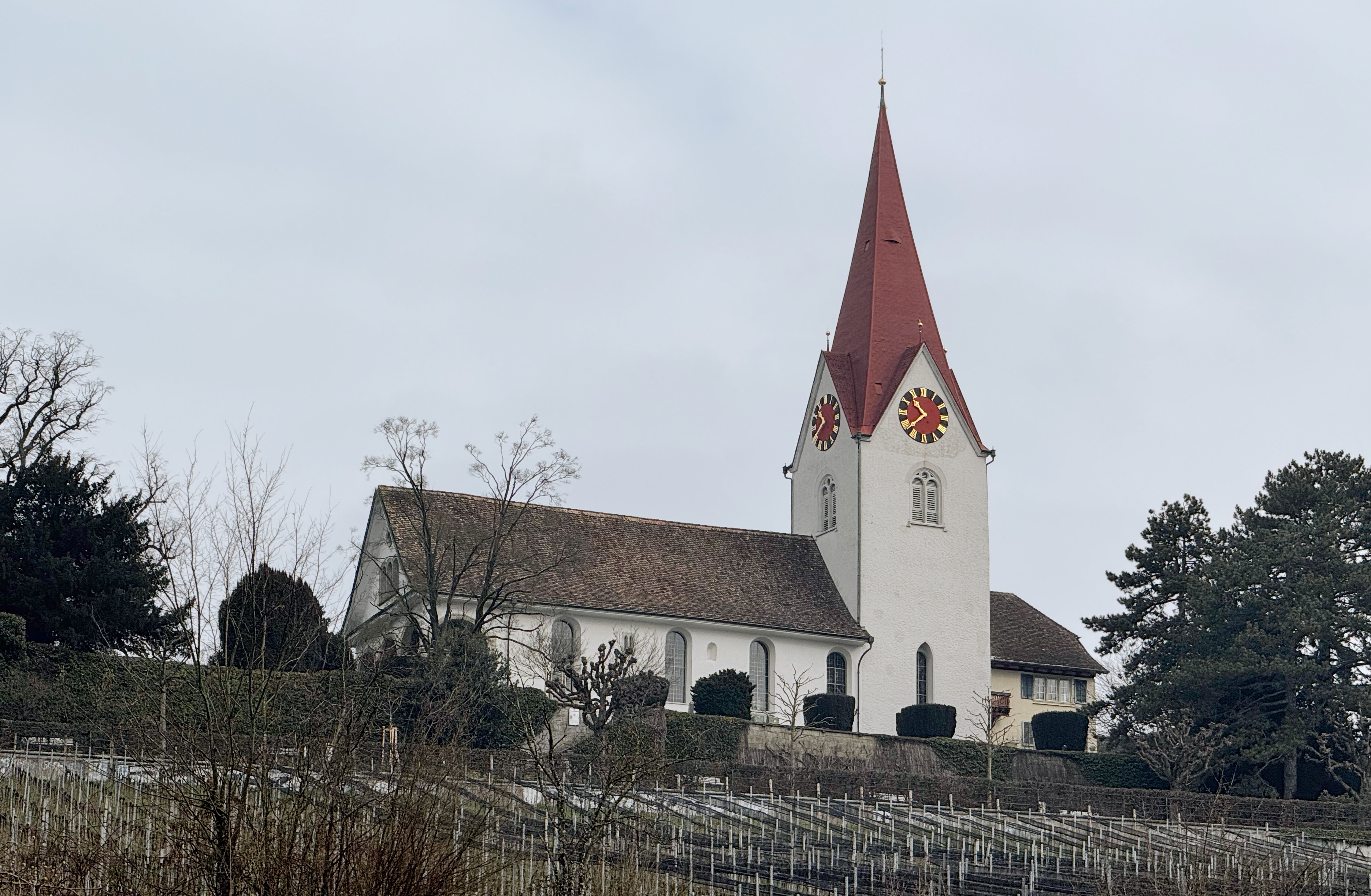
Looking back up to the Church in Höngg
As I walk upriver, I can see the church—my starting point—on my left. Both riverbanks have their share of people: young parents with children, joggers, and dog-walkers. As is typical in Switzerland, Sunday is quiet. The river flows leisurely; I hear birdsong and the faint background hum of distant traffic.
Up the Limmat
On the right riverbank where I’m walking, I notice several naturalised areas beside the river. Small trees, grasses, and fallen branches create a natural habitat for the local wildlife. Looking across to the opposite bank, I see multiple soccer fields. Only one appears to be in use today. I can’t identify their jerseys from this distance, but the players are wearing long trousers and sleeves—unsurprising given the patches of snow still visible along the pitch.
I check the small free library beside the path, but nothing catches my interest, so I continue upriver and take the next bridge to cross again. Now walking on the left bank, I admire the charming single-family homes to my right. I notice the excellent infrastructure, including five public trash cans within sight, spaced roughly 50 to 100 meters apart. They seem effective—I don’t see a single piece of litter anywhere.
At the next bridge, I decide to cross once more. I take a small pedestrian bridge just below the massive train-carrying structure. This crossing wasn’t necessary, but I hoped to catch more sunlight. Unfortunately, the sun wages a losing battle against the clouds today.
In the middle of the river stands a small islet I won’t visit today—too much water and far too cold. I recall watching a YouTube video of someone spending the night on a tiny island in New York’s East River. I wonder what would happen if I set up a tent on this islet. Not something I’ll discover today, but perhaps someday.
I decide to remain on the right bank for a practical reason: there is no pedestrian path on the left. With each step, I notice my surroundings becoming increasingly urbanised. I pass one of my favourite pizzerias, with its wonderful terrace overlooking the river. I find myself remembering summers past, enjoying pizza there as the sun broke through the clouds.
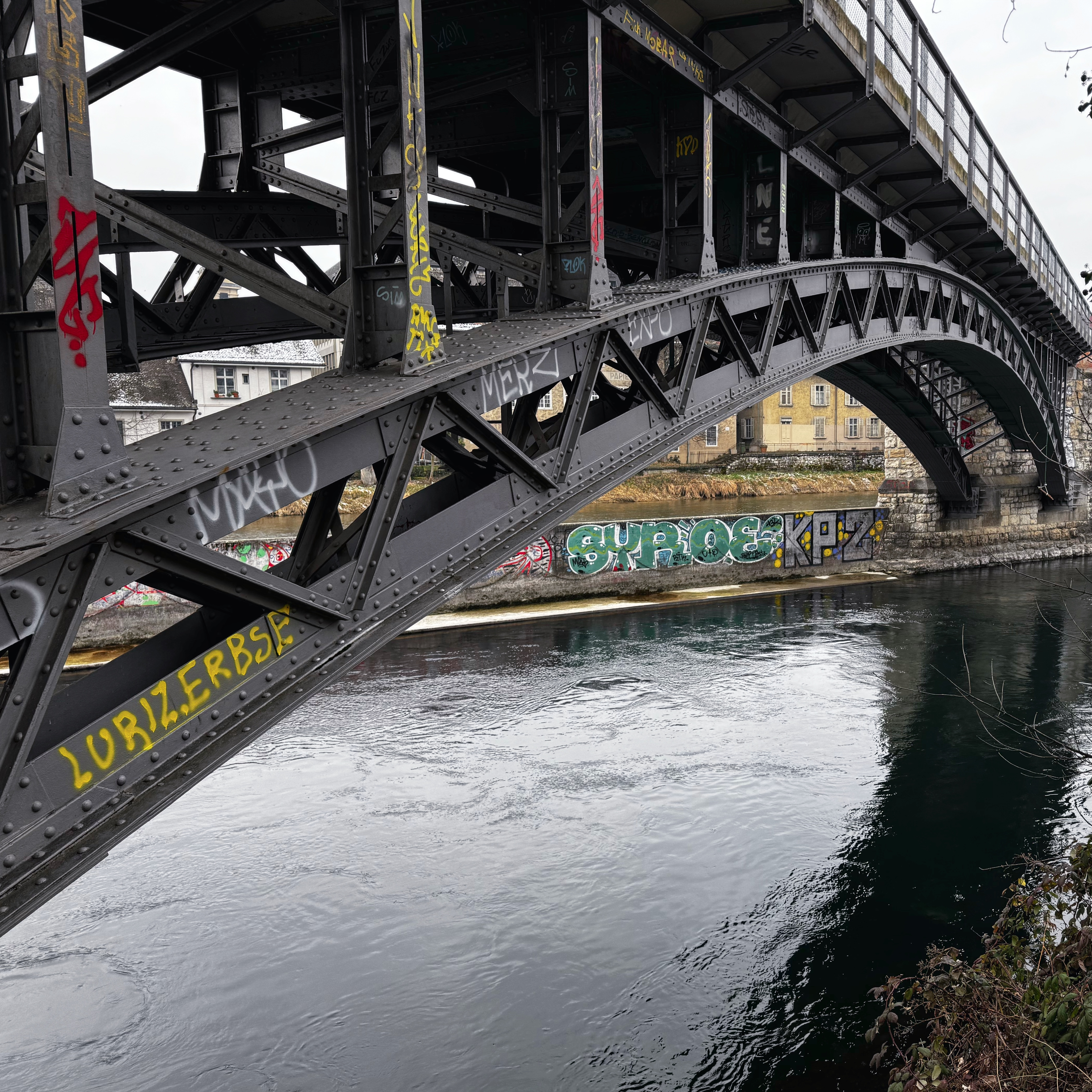
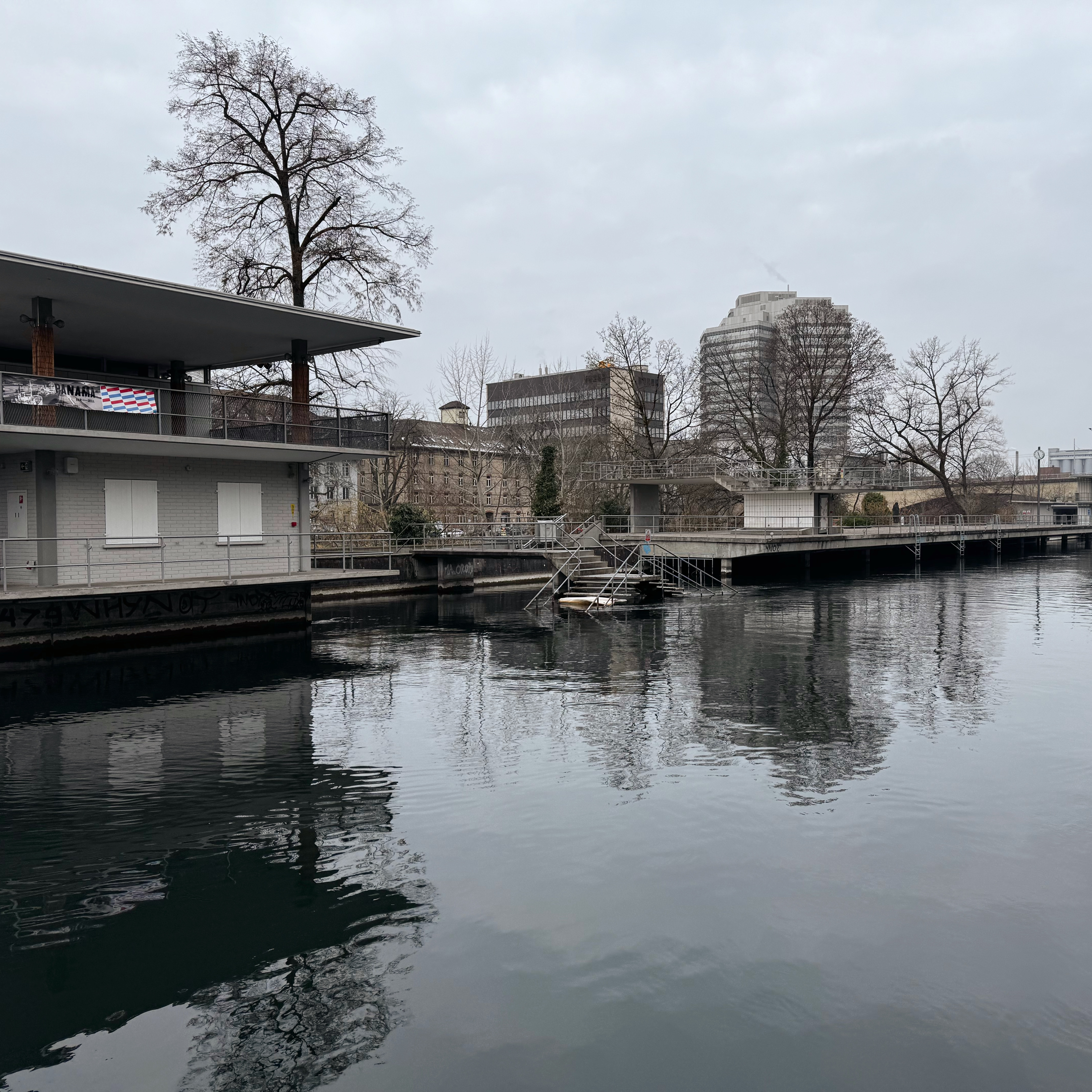
No one is swimming in the Limmat today, neither at “Unterer Letten” nor at “Oberer Letten.”
Further upriver, I pass through areas normally bustling with summer entertainment. The public river bath lies empty. No swimmers, no sunbathers, no water polo players. It is winter, after all. A bit further, at one of my favourite coffee spots, people sit inside enjoying their coffee or late breakfast. Only two people brave the cold outside, both smoking.
Passing through an underpass, I approach another area I love in summer—a somewhat alternative place with cafés and bars. In summer, it’s vibrant with flowers, colours, and life. Right now, it’s just slightly less gray than its surroundings, closed and lifeless.
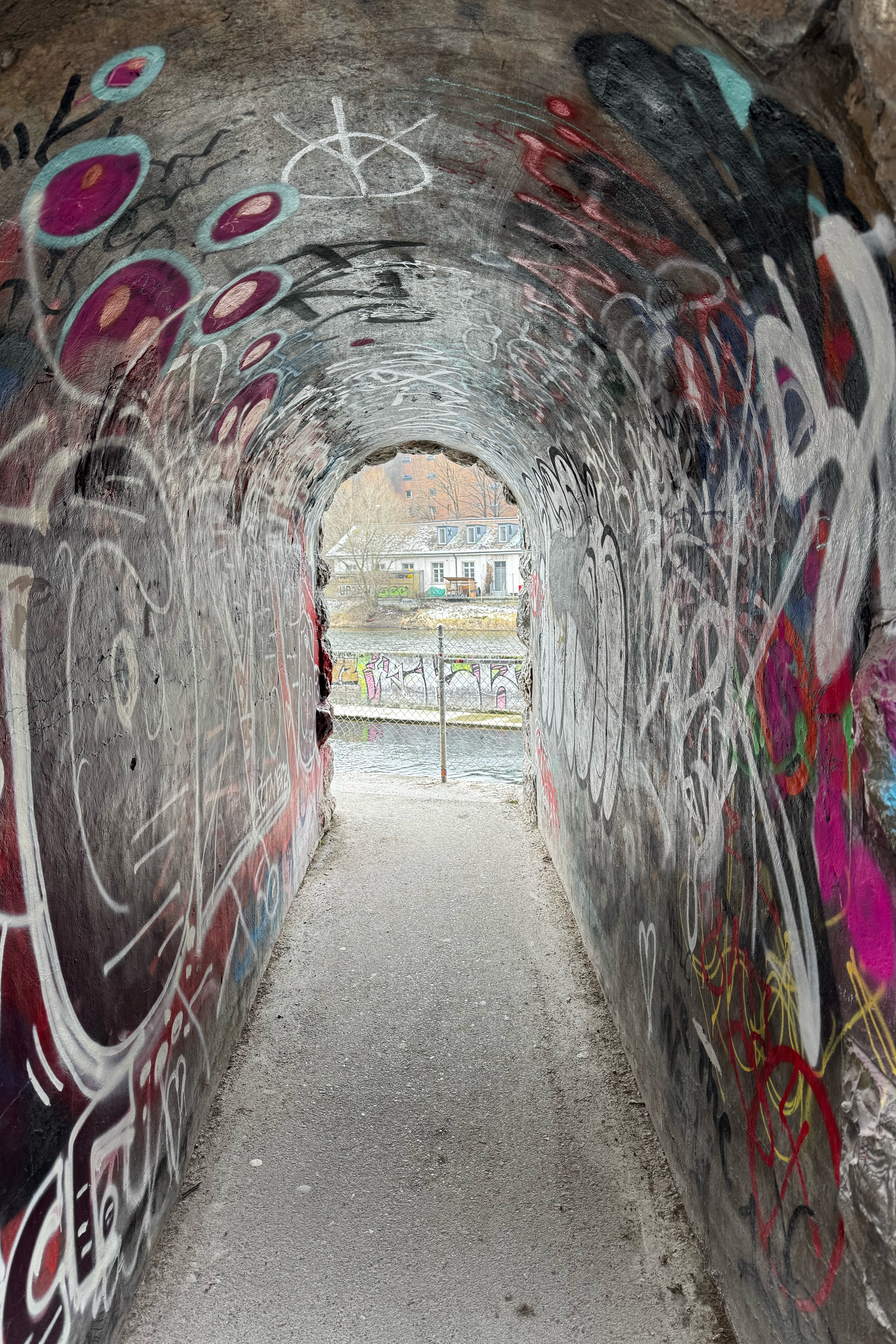
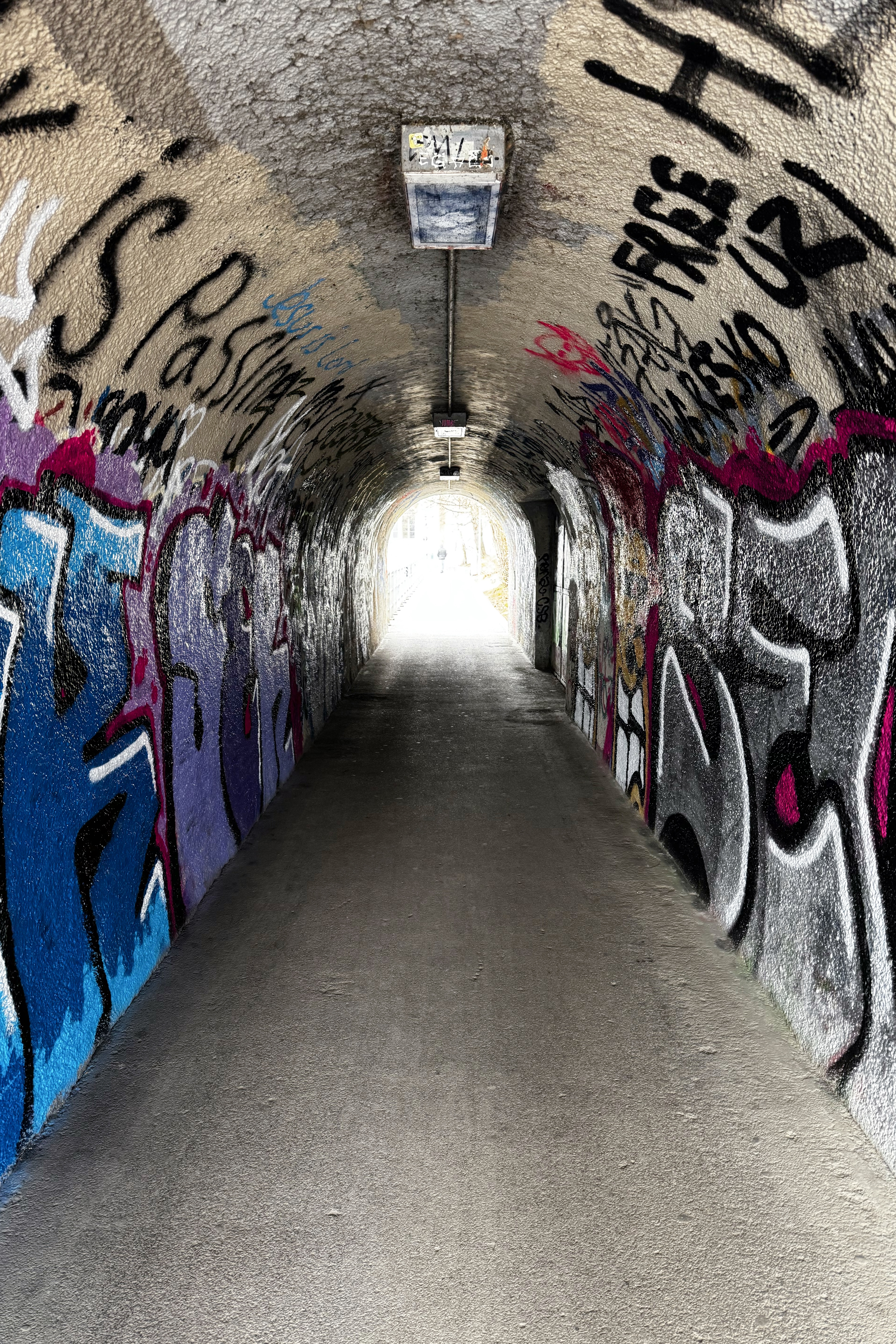
Through two underpasses, I begin to reach the city center.
Continuing upriver on the right bank, I pass an empty skateboard park, then an equally deserted volleyball court. The only sign of activity is a police car driving past the volleyball area. Further on, I see a policewoman walking a K-9 unit, not appearing to search for anything in particular.
Across the river lies the public swimming area called Oberer Letten. In summer, it’s often so crowded that finding space is nearly impossible. Today it stands gray, empty, and abandoned.
City Center
I cross another bridge and walk toward the Platzspitz, a small green haven amid the urban landscape. Though still gray today, some colourful graffiti on construction materials brightens the scene. The park has quite a few visitors—locals walking, tourists exploring—but everyone mostly keeps to themselves. There’s a sense of peace and quiet before entering the traffic-heavy area around the main station.
Leaving the park transforms my world abruptly. Gone is the peace and quiet, the calm river, the green scenery. Despite it being Sunday, plenty of cars fill the streets, making me wonder about their destinations and purposes. Shops may be closed, but the city pulses with life.
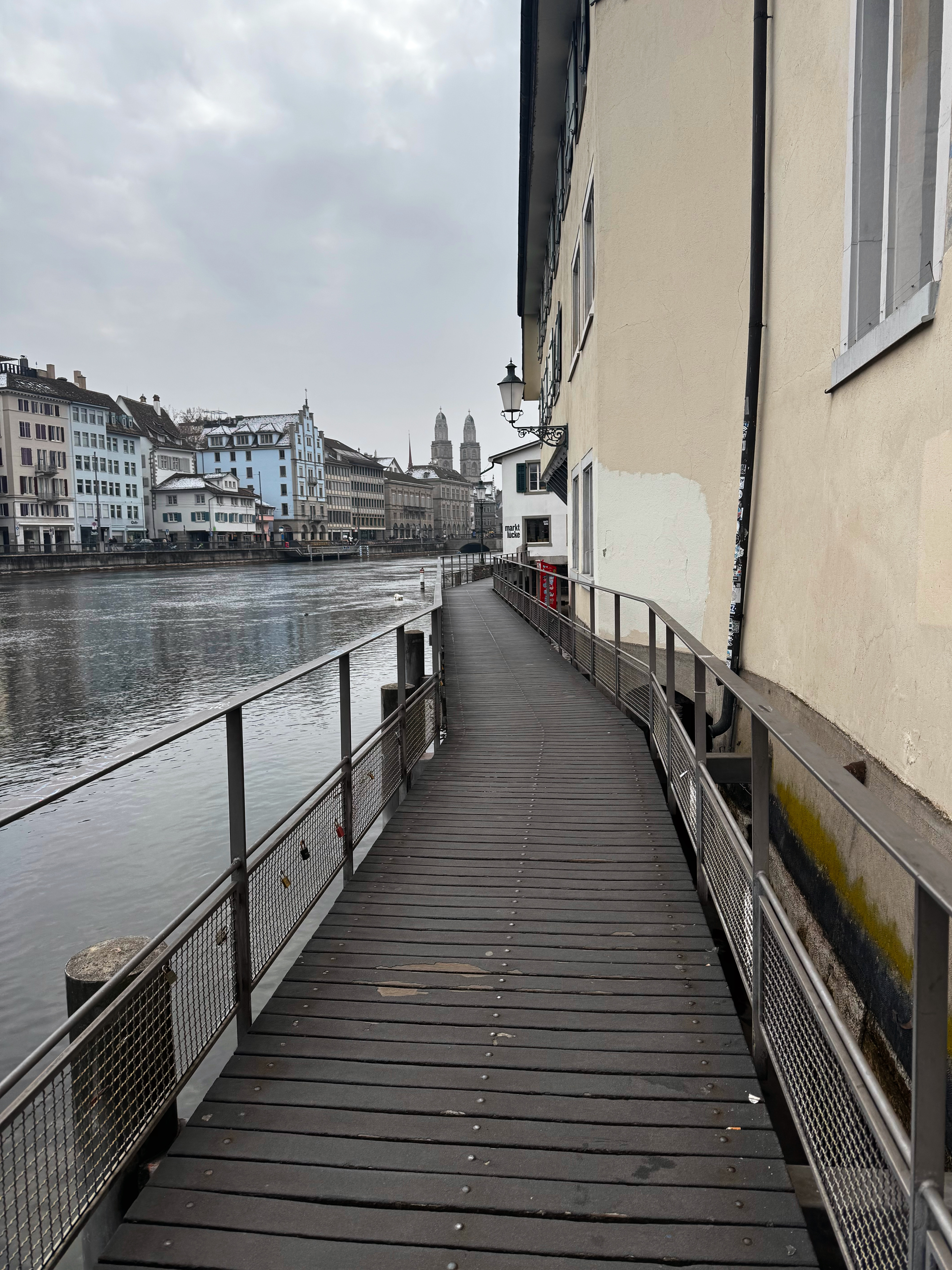
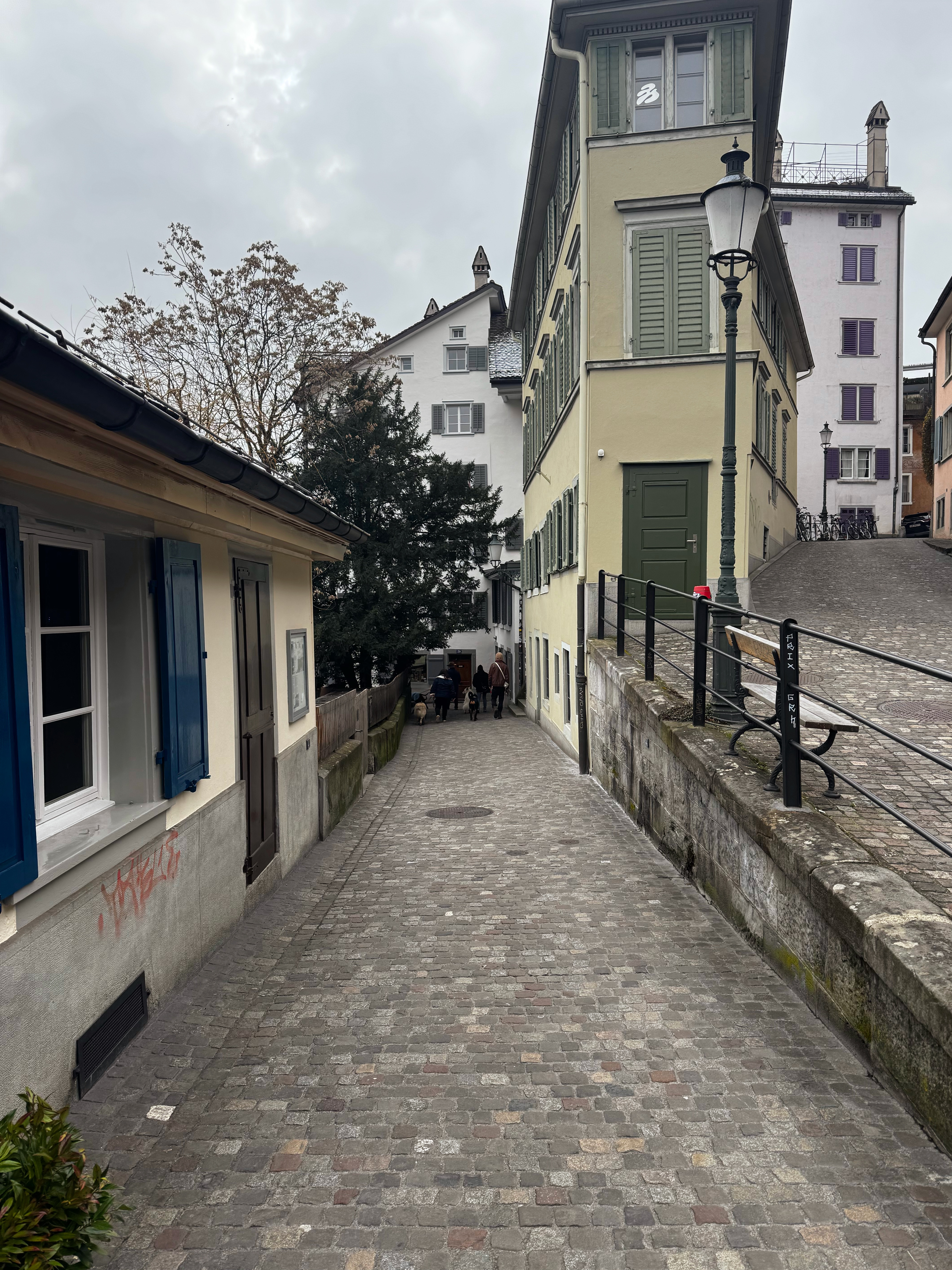
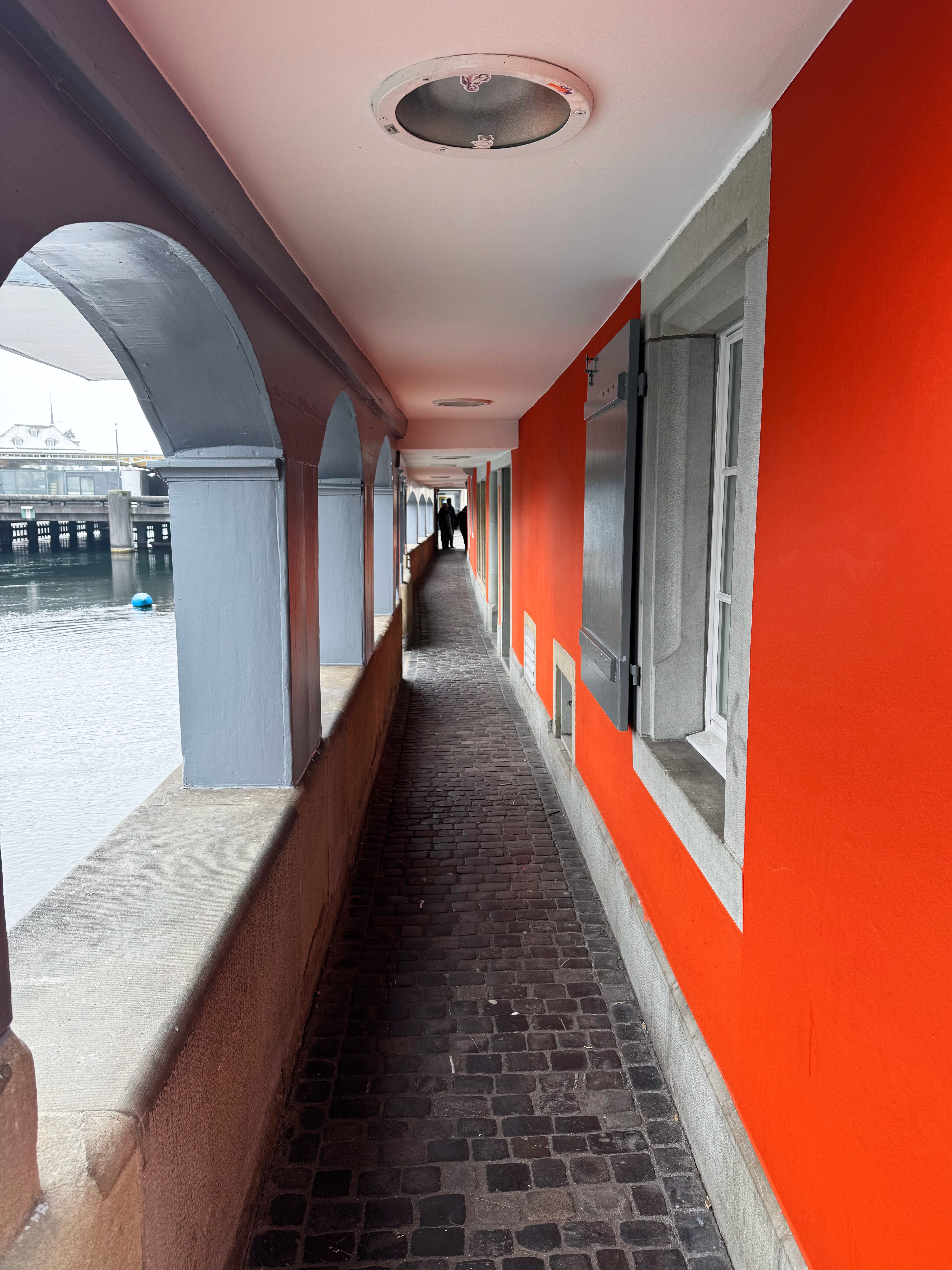
Over the water, through the alleys, and across the gallery.
I cross another street, leaving the path of cars behind. I traverse a footbridge, navigate through narrow alleys, and pass through a low-ceilinged gallery. My final steps take me through more narrow passageways, flanked by expensive shops—all closed today. After one last left turn, I stand before my favourite coffee shop and join the line.
I order a large flat white, as I have on countless Sundays before. The warm coffee fills me with that particular sense of satisfaction that only coffee can provide. Though the weather remains gray, and the colours muted, this simple pleasure brightens my day, just as it has so many times before.
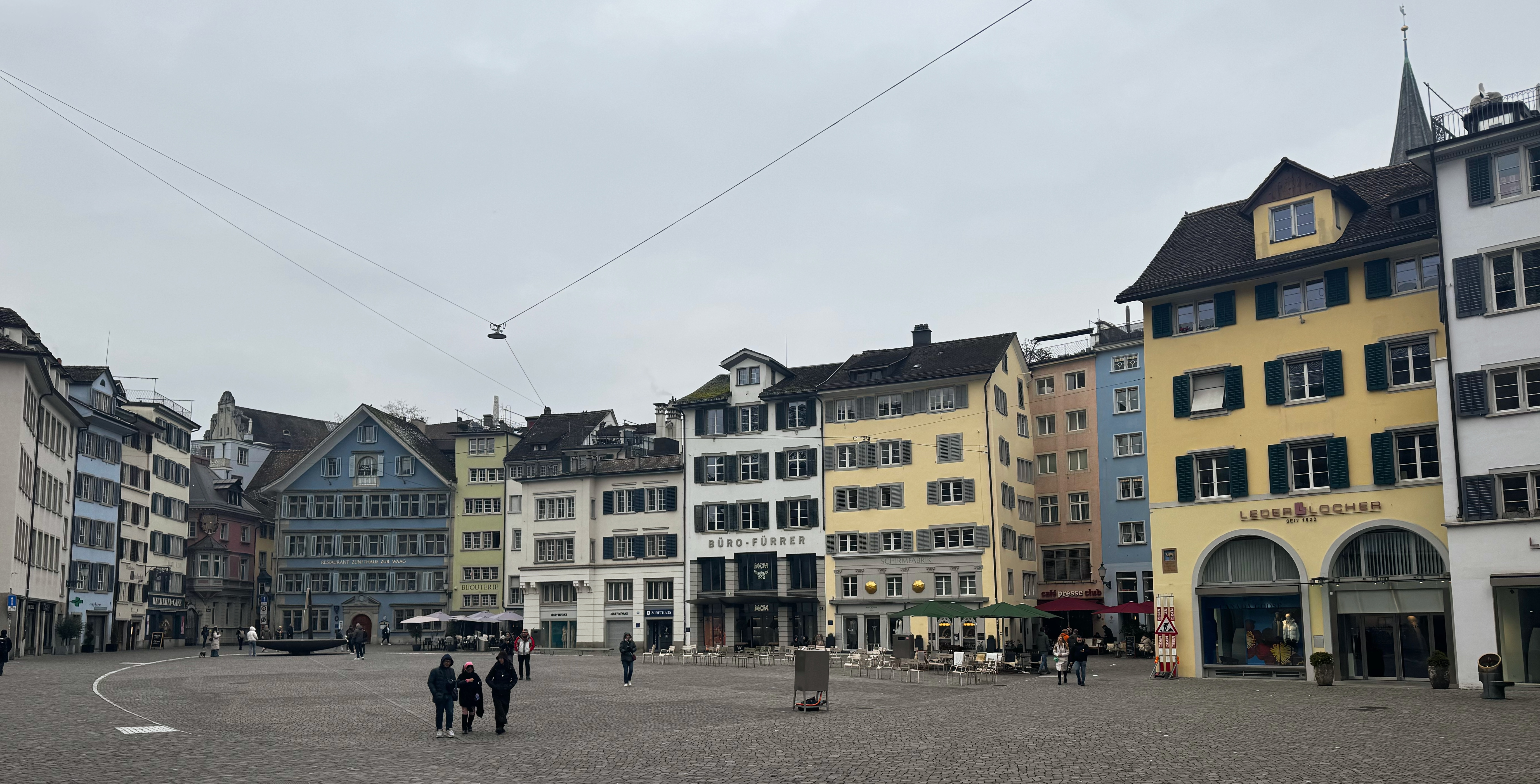
Münsterhofplatz, a great place to get a coffee.